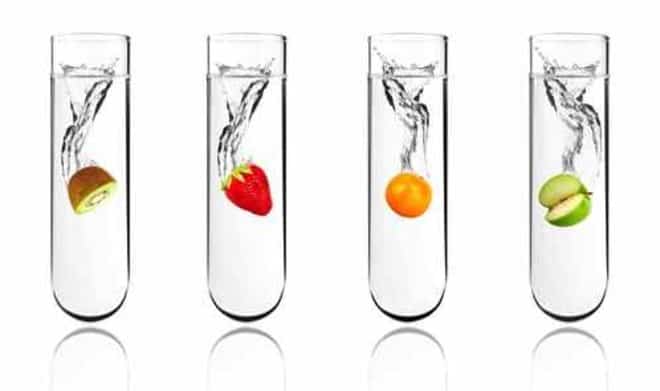Le Laboratoire—based in Paris—brings together artists and scientists to design and showcase experiments that engage with the issues of food and environmental sustainability.
The lab—one of a branch of art-science laboratories—was founded in 2007 by David Edwards, a professor at Harvard who has established several companies that have developed new approaches to drug delivery, plant filtration systems, and edible packaging.
Le Laboratoire has recently designed a water-storing bag, called the “Pumpkin” or the “Cell Bag”, an ecologically sustainable way to carry water, while minimizing the harm that water transport has on the environment. The Pumpkin’s versatile design allows carriers a hands-free way to transport and filter as much as 15 liters of water in multiple ways by shrinking or expanding to the amount of water it contains.
The designers, Edwards and Mathieu Lehanneur, claim that the Pumpkin is part of an “international humanitarian experiment to improve water transport” and to conserve water in parts of the world where access to clean water is limited.
According to the United Nations Department of Economic and Social Affairs, reliable water access—which is necessary to raise livestock and to grow crops—is the key to food security.
The Pumpkin has been sold commercially since 2010. Sales revenues have supported a three-year initiative from 2010 to 2013 by ArtScience Labs—in partnership with South African students and professors and Harvard faculty—to improve water accessibility and transport in African communities.
“We are now working with a dynamic local team in Cape Town and the Two Oceans’ Marathon to explore how to eliminate plastic from water transport in the marathon and in a way that is transposable to rural communities, such as the one where the CellBag is being used today (the Moretele Community),” Edwards said.
Le Laboratoire has also facilitated the design of other products and installations including the “Wikipearl” and the “Cummulus.”
The “Wikipearl” is a type of edible, all-natural food packaging meant to reduce the use of environmentally harmful plastics in food and beverage packaging. The invention prompted the founding of WikiFoods, Inc., a company—with locations in Cambridge, Massachusetts and Paris, France—that focuses on developing natural, edible packaging technologies. Edwards sees Le Laboratoire’s food innovations as part of the future of the sustainable food movement.
“I believe that we will be seeing non-plastic packaging based on WikiCell in commercial markets over the next three years for (beyond the current ice cream and frozen yogurt, launching now with Stoneyfield in the USA/Whole Foods) yogurt, desserts, water, condiments, soups, among other beverages and foods. I believe it is the start of a larger movement that will diminish dramatically the amount of plastic in the food chain,” Edwards said.
From 2007 to 2010, Le Laboratoire also helped facilitate a collaboration between a number of Chilean engineers, scientists, and water experts to design the “Cummulus”—a series of fog-collecting nets that capture moisture in the atmosphere that can be recycled into usable water. The installation was meant to engage conceptually with the issues surrounding equitable global water access.
In past year, Le Laboratoire has hosted a program convening 40 students from engineering schools—Ecole Centrale Paris, Telecom ParisTech—and design schools—Strate College, L’École nationale supérieure des Arts Décoratifs (ENSAD), and Mode’Estah—to brainstorm ideas and design around the theme, “Energy of the future.”
“To be brief, charting one’s course at a frontier (and one cannot view meaningful product development today with any other image in mind) is a combination of intuition, dream, induction, comfort with uncertainty and ambiguity—and deduction, analysis, an ability to simplify a complex world into resolvable hypothesis, which can be tested. Designers of the products tomorrow need to think like an artist, and like a scientist, at the same time, and behave with empathy,” Edwards said.
Le Laboratoire’s collaborative art-science experiments aim to pioneer not only designs with cultural and commercial applications but to catalyze local innovations that may support food system sustainability and global water security.













